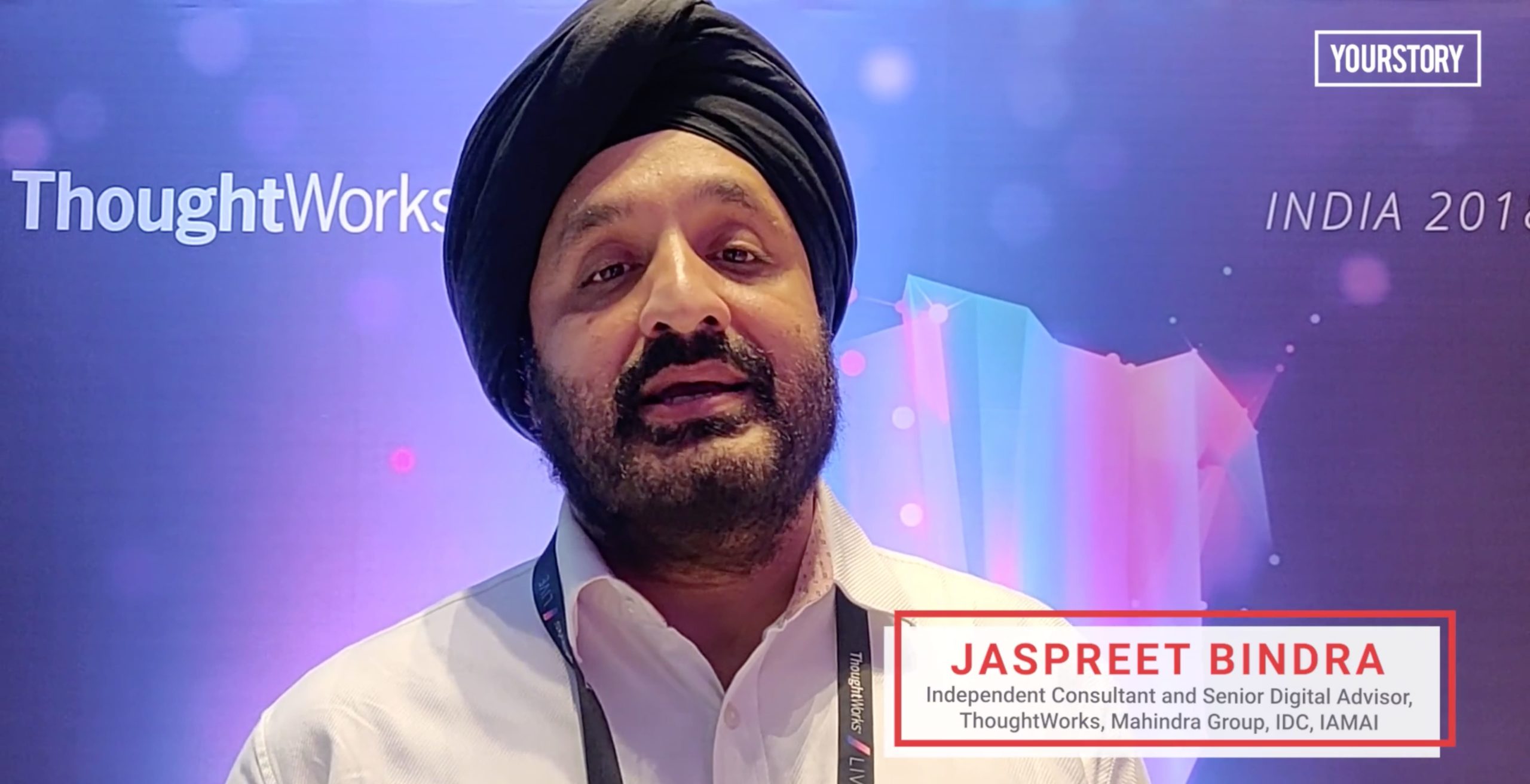The Top 5 Myths of Digital Transformation
Jaspreet Bindra
Digital Transformation is one of the top three priorities, if not the top priority, of CEOs worldwide. These are times of tectonic change – in business models, customer preferences and technology. Business leaders and CXOs worldwide need to figure out how to deal with this change and leverage it for business advantage.
Digital transformation, for many companies, is no longer a choice, but an imperative. Oftentimes, it is misunderstood, with everyone having a different definition for it. George Westerman, the MIT Professor and Author of ‘Leading Digital’ defines it as ‘the use of digital technology to radically improve the performance and/or reach of a company’. While the definition seems simple, the reality is far more complex. And, like all great complex concepts, there are many myths surrounding it. Let us discuss five of them:
Myth 1: Digital Transformation is Led and Owned by The Chief Digital Officer
Now, this might be heresy to CDOs and ex-CDOs like me, but the CDO does not own digital transformation. Neither does the CIO, or COO, or CMO. Digital Transformation, I have realised is actually nothing but business transformation. However, any business transformation today would, by default use digital tools and technologies, and call it Digital Transformation. Therefore, the leader needs to be the owner of the business – the CEO, the business owner or the Board. The CEO must have a clear vision of what she wants her business to become at the end of the transformation and be able to articulate the same. One of the best examples of this is probably General Motors Co. (GM), whose vision says: “Over the past 100 years, GM has been a leader in the global automotive industry. And the next 100 years will be no different.” GM’s CEO Mary Barra and her management follow this to the letter, and GM is transforming like no other: the $500 million infusion in Lyft to enter the fleet platform space, their electric vehicle programme, and the GM OnStar digital experience are steps taken to reinvent and transform the company.
Myth 2: Digital Transformation is Not Linked to Business Metrics
There was a time companies fell over each other to create their own dotcoms; it was the fashionable thing to do. Until suddenly one day it was not. It is surprising how many CEOs want to go digital, because everyone is doing it, or because it has great ‘PR value’ or because their kids, or the analysts, want them to! Needless to say, these are absolutely the wrong reasons to go digital. The digital transformation exercise must impact real metrics—revenue, profit, cost, customer engagement, retention or repeat buying—and therefore impact business in a positive manner. And, we should know what metrics we trying to change, and by how much, right up front; or else, the whole exercise is not worth doing.
Myth 3: Digital Transformation is Only About Digital, Not IT
The digital front-end (website, app, store, etc.) and the back-end (like customer relationship management (CRM), enterprise resources planning (ERP) and billing systems) need to sync with each other. There is no point building a killer engagement app for smartphones, without it being integrated seamlessly with the Big Iron at the back. This is the ‘uncool’ part of the equation, the most common point of failure of your digital story. It is also where most of the hard work has to happen. While digital is not necessarily IT, IT is the backbone of all digital execution.
Myth 4: Digital Transformation and Digitization are the Same Things
This is probably the greatest myth that needs busting. Both Digitization and Digital Transformation are super important, but they are different things. Digitization is about taking, say, a process, and making it better, faster, cheaper using digital tools and technologies. So, digitization is about efficiencies and saving costs. It is inside-out. It is an operational necessity: about operational excellence, predictability, making data accessible and reliable. It is a key input for scale and efficiency. However, it will not make a business a digital one. For that, you need to digitally transform a business. Digital Transformation is a customer-centric value proposition. It is how digital technologies and information can enhance an organization’s existing assets and capabilities to create new customer value. Digital offerings are the specific solutions that deliver on a company’s digital value proposition. The key benefits of digital transformation are growth in revenues and margins, undying customer loyalty, and the ability to attract top talent (and thus continue to grow). It is about business models, customer experience, and people, culture, talent; and key deliverable is customer value.
An example I use in the Indian context is Meru, the taxicab service. Digitizing Meru will make it run faster, cheaper, more efficiently. However, digitally transforming Meru will be converting it to (a business model like) Uber or Ola – a totally different customer value proposition.
Myth 5: Digital Transformation is Quick!
Digital transformation is going to be a long, trying passage. There will be stomach-churning ups and downs, and severe doubts and disruptions along the way. The primary quality needed of a CEO to traverse this path is not mercurial brilliance, or a driving ruthlessness or even faultless execution, but sheer, limitless patience. As the world-renowned artist, Michelangelo remarked: “Genius is eternal patience”.
One of the companies that had ‘eternal patience’ and was richly rewarded for it was Burberry. Burberry went through an unprecedented digital transformation, a first in the luxury industry, where it became ‘and end to end digital company’ and made itself far more attractive to younger buyers in the U.S., Europe, and China. They did many things right and a few wrong, but the key here was that it took nine years! And, more importantly, the CEO and the Chief Creative Officer, Angela Arhendt and Christopher Bailey, stuck together in the company for all the nine.
Digital transformation is already going on all around you. If you’re not yet preparing your business for what will be at least a major disruption if not a complete alteration of the way you operate today, it’s time to start ramping up now. But before you jump on the digital transformation bandwagon, be able to distinguish fact from fiction so you make wise choices. Dispelling these five myths will help.
About the Author
A long-time executive and evangelist in the field of digital transformation, Jaspreet Bindra has led, mentored and even incubated numerous companies in their missions to master internet, blockchain and other emerging technologies. Currently the digital advisor to the Mahindra Group, International Data Corporation (IDC) and the Internet & Mobile Association of India (IAMAI), Jaspreet also leads the Emerging Technologies Forum. He writes and keynote speaks extensively on the topics of digital transformation, blockchain, agritech, platform business models and artificial intelligence (AI). His career background includes leadership roles at the Tata Group, Baazee (now eBay India), Microsoft India and AskMe. He recently joined Simplilearn as a key faculty advisor to build and enrich the global e-learning provider’s curriculum in the Digital Transformation category.
FAQ
Digital transformation is the process of using digital technologies to create new or modify the existing business processes and customer experiences so as to optimize and streamline internal processes while meeting the changing market requirements and addressing the evolving expectations of their customers. The impact of digital transformation on companies can be huge.
Digital transformation is creating an unprecedented opportunity for innovation across all industries and seeing a total reinvention of products, services and experiences in the market. It creates an extraordinary room for growth in all industries and is becoming a strategic necessity to enhance organizational performance, boost revenue, be more adaptable to market customer demands and achieve maximum asset performance and efficiency.


